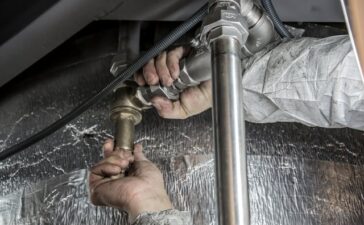Essential components of our electrical environment, transformers often operate behind-the-scenes to make sure power gets to us safely and effectively. Among these, voltage conversion depends critically on step down transformers. You might already be familiar with appliances you have ever plugged in with varying voltage requirements than your source. Knowing how these gadgets operate can enable you to better control your electrical consumption.
Knowing about step down transformers will help you avoid expensive errors and safety risks whether you are organising tools for home use or a bigger project. Let us explore the interesting mechanics of step down transformers and discover their advantages!
How do Step Down Transformers operate?
Operating on a yet powerful electromagnetic induction concept, step down transformers For many uses, they safely translate high voltage electricity into lower voltage levels.
Two coils encircling a magnetic core are quite important inside the transformer. Whereas the secondary coil generates output current at lowered voltage, the main coil gets input current at high voltage.
Alternating current creates a magnetic field in the first coil that causes an electric flow in the secondary coil. Each coil’s spin count controls the voltage stepping down power level.
For instance, you would expect your output to be one-fourth of your input if the main turns 200 and the secondary turns 50. This effective system guarantees that gadgets get only the correct power they require free from risk or damage resulting from too high voltage levels.

Advantages of a step-down transformer
By reducing high voltage to lesser levels, step down transformers are absolutely vital in electrical systems. This procedure improves safety especially when running appliances meant for specified voltage levels.
Energy efficiency ranks among the main advantages. These transformers serve to minimise overheating and too large power losses by lowering voltage. They let devices run without running across overvoltage, therefore avoiding damage.
Moreover, step down transformers help your electronics last longer. Running at ideal voltage reduces component stress, which over time results in reduced repairs or replacements needed.
They also encourage adaptability in several spheres. Whether running industrial gear or household appliances, a step down transformer fits well to various needs and guarantees consistent performance in many environments.

Considerations Prior to Buying a Step Down Transformer
First consideration for a step down transformer should be voltage needs. Clearly know your input and output voltages. This guarantees choosing a model fit for your particular use.
Examine the power rating next. Transformers have varying wattage capacity. Selecting one that satisfies or somewhat surpasses your needs will help to avoid overheating and possible damage.
Never ignore weight and size. Where you intend to place it will affect usability greatly depending on these elements.
Think also on efficiency ratings. Over time, a more efficient transformer saves energy expenditures, so it is a long-term economic decision.
Search manufacturers for warranty choices and safety certifications. These give peace of mind about dependability and quality even in different contexts of use of the gadget.





